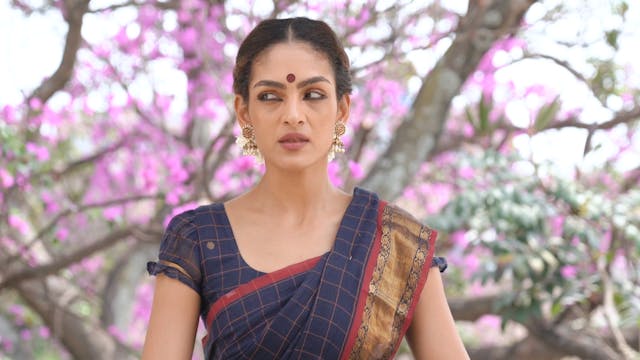Samyukta Hasta
Playlist 6
•
1m 8s
The Asamyuta hastas, as described in the Abhinaya Darpana are 28 in number.
These Hastas are used primarily communicate meaning gesturally, The Viniyogas in the Abhinaya Darpana describe a number of possible gestural implications for each Hasta.
Please refer to the Shloka below for pronunciation. Please note that the separate movements of the head when put together in a Shloka form 'Sandhis', or compound words in the Sanskrit language. Words like 'ca', 'thatha', mean "and", "also". The separate words for each movement are also given below the shloka.
Anjalisća Kapōtasća Karkata Swastikastatha
Dolāhasta Puśpaputaha Utsangah Śivalingakaha
Katakāvardhanasćaiva Kartarīswastikastatha
ŚakataŚanka Chakreća Samputa Pāśa kēlakau
Matsya Kurma Varāhaśća Garudo Nāgabandhakaha
Katva Berundākyesća Avahittastathaivaća
Ćaturvimśathisankhyāka Samyuktāha katithāha karāha
Anjali
Kapōta
Karkata
Swastika
Dolā
Puśpaputaha
Utsangah
Śivalinga
Katakāvardhana
Kartarīswastika
Śakata
Śanka
Chakra
Samputa
Pāśa
Kēlaka
Matsya
Kurma
Varāha
Garuda
Nāgabandha
Katva
Berundā
Avahitta
Up Next in Playlist 6
-
Shirobheda Abhinayadarpanam
The Shirobhedas, as described in the Abhinaya Darpana are 9 in number.
These Shirobhedas, or gestures of the head are used primarily communicate meaning gesturally, and also used for specificity in Nritta.Please refer to the Shloka below for pronunciation. Please note that the separate movement...
-
Drishtibheda Abhinyadarpana
The Drishtibhedas, as described in the Abhinaya Darpana are 8 in number.
These Drishtibhedas, or gestures of the eyes are used primarily communicate meaning gesturally, and also used for specificity in Nritta.Please refer to the Shloka below for pronunciation. Please note that the separate move...
-
Grīvabheda Abhinayadarpanam
The Grīvabhedas, as described in the Abhinaya Darpana are 4 in number.
These Grīvabhedas, or gestures of the neck are used primarily communicate meaning gesturally, and also used for specificity in Nritta.Please refer to the Shloka below for pronunciation. Please note that the separate movement...


